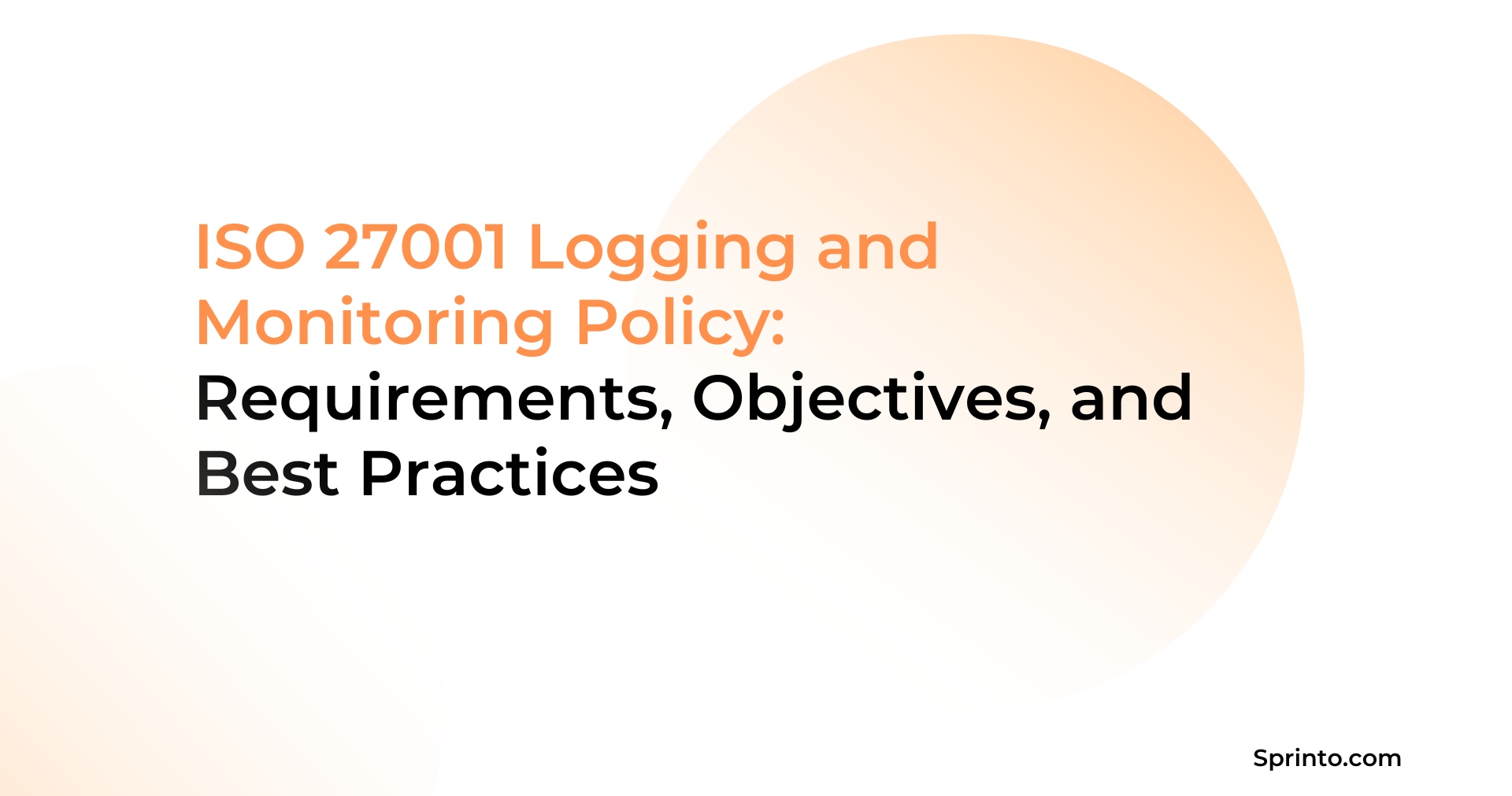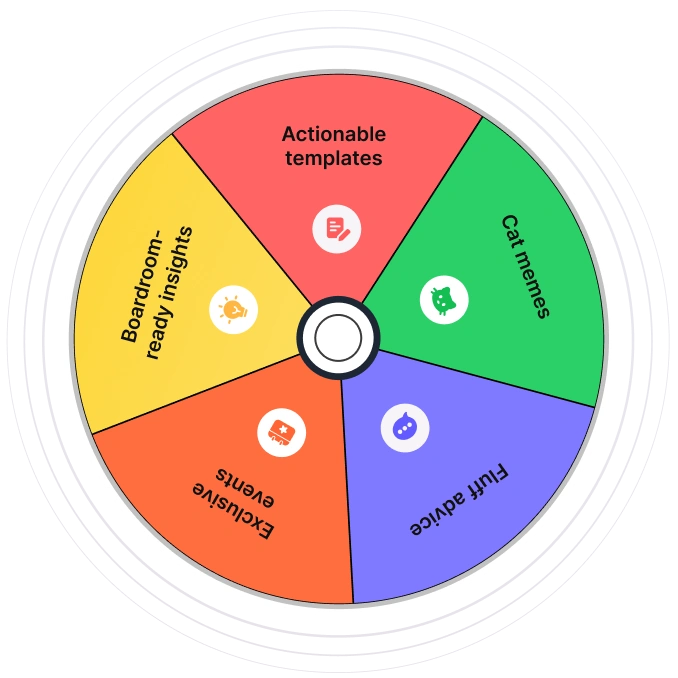When systems process sensitive data and users have wide access, it’s critical to know exactly what’s happening, when, and by whom. Logging and monitoring gives you that visibility. It captures every meaningful action including access changes, configuration edits, and data updates, so you can track patterns, investigate issues, and respond with confidence.
This isn’t just about spotting threats. It’s about making better security decisions, proving compliance, and ensuring your systems behave as expected. That’s why frameworks like ISO 27001 mandate it. Not for compliance alone, but because it proves your systems are working as intended.
In this blog, we’ll cover the requirements, objectives, best practices, and steps to implement an ISO 27001 Logging and Monitoring Policy.
What is ISO 27001 Logging and Monitoring?
The ISO 27001 logging and monitoring policy is a formal document that defines how an organization records, monitors, and reviews activities across its information systems to detect, respond to, and prevent security incidents.
ISO/IEC 27001:2022 maps this to controls A.8.15 (Logging) and A.8.16 (Monitoring activities), and also links it to incident management controls (A.5.25–A.5.28).
ISO 27001 Logging and Monitoring Policy Requirements
To comply with ISO/IEC 27001:2022, organizations must set clear requirements for how logs are created, protected, monitored, and used. Below are the key areas your logging and monitoring policy should cover:
1. Event logging
Event logging forms the foundation of log management, providing a record of system user actions. Without it, detecting unauthorized access or suspicious changes becomes nearly impossible. To meet ISO 27001 requirements, the policy should mandate logging of:
- Authentication attempts (successful and failed).
- Privileged account activity and administrative actions.
- System and application errors or failures.
- Configuration changes and critical file modifications.
- Use of logging and audit functions.
- Key details such as date/time, user ID, IP addresses, event type, and outcome.
2. Log generation and collection
Centralized log generation ensures that security events can be analyzed across different systems. Standardization also makes it easier to spot patterns and anomalies. Your ISO 27001 logging and monitoring policy should therefore require that:
- Logs are generated in a standardized format across all systems.
- All logs are forwarded to a central log management or SIEM tool for aggregation and correlation.
- Log sources, formats, and transmission methods are clearly defined and documented.
3. Logging for administrators and privileged accounts
Privileged accounts carry elevated risks due to their access rights. Detailed logging ensures accountability and helps detect misuse, such as unauthorized data access or unauthorized system changes. To mitigate risks, the policy should ensure that:
- All activities from administrator or privileged accounts are captured (e.g., user creation/deletion, permission changes, configuration updates).
- Access to privileged account logs is restricted and strictly monitored.
- Only authorized security personnel are allowed to review privileged activity logs.
4. Log retention and protection
Logs must be available when needed and remain trustworthy. Retention and protection requirements ensure logs are accessible for audits and investigations while protected from tampering or misuse. To safeguard log integrity, the policy should specify that:
- Logs are retained for a defined period based on business or regulatory requirements.
- Logs are secured against deletion, tampering, or unauthorized access.
- Logs are securely disposed of once the retention period ends.
5. Monitoring and review
Monitoring turns static logs into actionable insights. Proactive oversight allows organizations to detect unusual behavior quickly and act before it becomes a serious incident. To achieve this, the policy should require that:
- Automated monitoring tools are used to identify anomalies or suspicious activity.
- Alerts are generated for high-risk events (e.g., privilege escalation, repeated failed logins, large data transfers).
- Manual reviews are conducted periodically to complement automated monitoring.
6. Incident response integration
Integrating logs into incident management ensures faster detection, thorough investigations, and stronger defenses over time. The policy should therefore ensure that:
- Suspicious activities from logs are escalated into the incident response process.
- Relevant logs are referenced in incident reports as supporting evidence.
- Lessons learned from incidents are used to improve logging and monitoring practices.
Automate log collection and monitoring - Schedule a demo to simplify compliance.
Key Objectives of Logging and Monitoring
Logging and monitoring are essential parts of ISO/IEC 27001:2022. They give organizations the visibility needed to understand what’s happening inside their systems and catch problems before they turn into real damage.
A good policy ensures that logs are collected and used in a way that strengthens security and compliance.
Here are the main objectives to focus on:
1. Early Detection of Threats
Timely logging allows an organization to spot unusual activity, such as repeated failed login attempts, unexpected configuration changes, or suspicious file access. The sooner these patterns are caught, the quicker they can be prevented from turning into major incidents.
2. Stronger Incident Response
Logs provide the trail of evidence security teams need during investigations. Whether it’s tracing the source of a malware infection or tracking privilege misuse, comprehensive monitoring speeds up response time and ensures decisions are based on precise data.
3. Accountability and Traceability
Logs create a clear trail of responsibility by linking actions back to specific users or systems. This discourages misuse of privileges, reduces insider risk, and builds confidence that all critical activities can be tracked if questions arise.
4. Forensic and Root Cause Analysis
When an incident occurs, logs are the historical record of what happened. They help teams understand how the incident unfolded, the root cause, and how to close security gaps so similar events don’t recur.
5. Audit and Compliance Readiness
ISO 27001 and other standards such as SOC 2, HIPAA, or GDPR, require organizations to prove their security practices. Well-maintained logs make audits smoother and show regulators, partners, and customers that you have strong controls in place.
6. Continuous Security Improvement
Beyond incidents and audits, logs provide insights into recurring issues, attempted attacks, or weak spots in systems. Reviewing them regularly helps organizations strengthen defenses and improve resilience over time.
Steps to Implement ISO 27001 Logging and Monitoring Policy
Moving from a written policy to day-to-day practice is where many organizations struggle. Implementing a logging and monitoring policy under ISO/IEC 27001:2022 requires clear planning, the right tools, and ongoing effort. The following steps provide a structured approach:
1. Assess Current Capabilities
The first step is to review existing systems and identify what logging features are already in place. This assessment should highlight gaps, such as applications or devices that are not being monitored, and provide a baseline for improvements.
2. Define Logging Objectives
Next, clarify the purpose of logging within your organization. Whether the goal is early detection of threats, compliance with audit requirements, forensic investigations, or all of these, having clear objectives ensures that your logging setup is designed with intent.
3. Select Tools and Technologies
Choose the right tools to support your policy. For some organizations, a lightweight centralized log management system may be sufficient, while larger enterprises may require a more advanced Security Information and Event Management (SIEM) platform to handle scale and complexity.
In addition, consider compliance automation tools that integrate with these systems. They can automatically collect evidence, map logs to ISO 27001 controls, and generate audit-ready reports, significantly reducing manual effort during certification and ongoing compliance.
4. Develop Logging Standards
Create internal standards that specify what events must be logged and how logs should be formatted. Consistent logging across servers, applications, and cloud environments makes it easier to analyze data and correlate events across different systems.
5. Establish Monitoring Processes
Define who is responsible for monitoring logs, how often reviews will take place, and what types of events should trigger alerts. Document escalation procedures to ensure that suspicious activities are acted upon quickly and consistently.
6. Secure and Retain Logs
Protect logs from tampering or unauthorized access by applying strong security controls. Define retention timelines that align with regulatory, legal, or business requirements, and ensure that logs are securely deleted once the retention period expires.
7. Integrate with Incident Response
Ensure that your incident response plan includes clear use of logs. Train teams to reference logs during investigations, use them as evidence, and update security measures based on what is learned from each incident.
8. Train and Educate Staff
Provide training so that administrators, security analysts, and compliance personnel understand the policy and how to apply it in practice. Staff awareness is critical to ensure that logging and monitoring are carried out consistently and effectively.
9. Review and Improve Over Time
Conduct regular reviews to evaluate whether the policy remains effective, and update it whenever new systems are introduced, threats evolve, or compliance requirements change.
Best Practices to Implement ISO 27001 Logging and Monitoring Policy
Once your logging and monitoring policy is in place, the real challenge lies in making it practical and sustainable. Following best practices helps organizations go beyond bare-minimum compliance and turn logging into a valuable security tool.
1. Prioritize High-risk Systems
Not every log carries the same weight, so focus on high-value systems (such as databases holding sensitive data) and high-risk activities (such as privileged account usage) to ensure that monitoring efforts deliver the most impact.
2. Balance Detail With Practicality
Overly detailed logs can overwhelm teams, while too little detail makes them useless. Strive for a balance by capturing enough information to investigate incidents, such as timestamps, user IDs, and outcomes, while keeping the volume manageable so storage and monitoring dashboards don’t get overloaded.
3. Automate Where Possible
Manual log reviews are time-consuming and error-prone. Use automation for log collection, correlation, and alerting. Compliance automation platforms can take this further by mapping log evidence directly to ISO 27001 controls, saving time during audits.
4. Protect Logs Like Critical Assets
Logs contain sensitive information that attackers may try to alter or erase. Apply strong access controls, encryption, and integrity checks to ensure logs remain tamper-proof and trustworthy.
5. Integrate With Broader Security Processes
Logging is not a standalone activity. Ensure logs feed into your incident response plan, risk management framework, and security awareness training. This integration ensures that monitoring supports the bigger security picture.
6. Regularly Review Controls
As threats evolve and systems change, periodic reviews of logging and monitoring processes are crucial. This helps refine event thresholds, update retention periods, and ensure coverage of new technologies.
7. Foster Cross-Team Collaboration
Effective monitoring is not just an IT or security task. Compliance, operations, and business stakeholders should be involved to align logging practices with organizational priorities and regulatory requirements.
Streamlining Logging and Monitoring with Sprinto
Implementing a logging and monitoring policy can feel complex, especially when you need to prove compliance during audits. It often means juggling multiple systems, chasing evidence, and worrying about whether you’re covering all ISO 27001 requirements.
This is where Sprinto makes things easier by automating the heavy lifting and giving you complete visibility in one place.
- Automated evidence collection: Sprinto captures log data from your systems and maps it to ISO 27001 controls automatically.
- Continuous monitoring: It monitors your environment in real time and flags potential issues instantly.
- Audit-ready reports: Sprinto generates ISO 27001-aligned reports that auditors can review with ease.
- Simplified compliance management: It reduces manual work by automating log collection and evidence mapping.
- Geared for scalability: Sprinto adapts to your business needs, keeping you compliant as you grow.
See Sprinto in action. Speak to our compliance experts today.
FAQs
At a minimum, organizations should log security-related events such as user login attempts (successful and failed), privileged account activity, system or application errors, configuration changes, and access to sensitive data. Logs should capture details like timestamp, user ID, source IP, and the outcome of the event.
The frequency depends on your risk profile, but ISO 27001 expects logs to be reviewed on a regular and defined schedule. High-risk systems should be monitored daily or in real time with automated alerts, while lower-risk systems may be reviewed weekly or monthly.
Yes, you can start with a PDF template for your Logging & Monitoring Policy, but it should always be tailored to your organization’s systems, risks, and compliance needs.
In ISO/IEC 27001:2022, logging and monitoring are covered under:
1. A.8.15 – Logging
2. A.8.16 – Monitoring activities
3. Backups are addressed separately under A.8.13 – Information backup.
ISO 27001 does not prescribe a fixed list of log events, but it requires organizations to establish a policy that defines:
1. Which events must be logged (e.g., logins, errors, privilege changes).
2. How logs are protected against tampering.
3. How long logs are retained.
4. How monitoring and reviews are performed.
Payal Wadhwa
Payal is your friendly neighborhood compliance whiz who is also ISC2 certified! She turns perplexing compliance lingo into actionable advice about keeping your digital business safe and savvy. When she isn’t saving virtual worlds, she’s penning down poetic musings or lighting up local open mics. Cyber savvy by day, poet by night!
Explore more ISO 27001 articles
ISO 27001 Overview & Requirements
ISO 27001 vs Other Frameworks
ISO 27001 Audit & Certification Process
ISO 27001 Management & Assessment
ISO 27001 Implementation & Automation
ISO 27001 Industry-Specific Applications
research & insights curated to help you earn a seat at the table.








